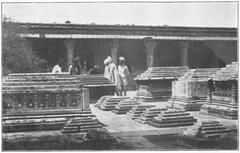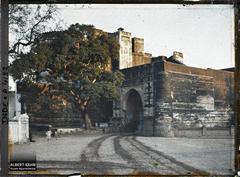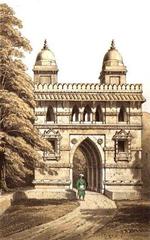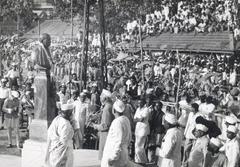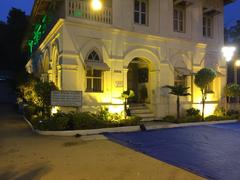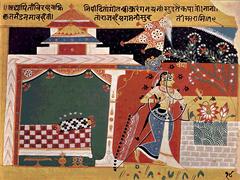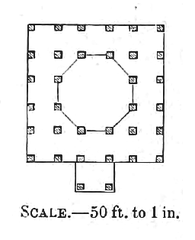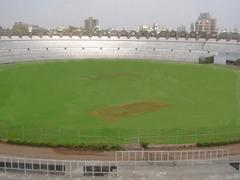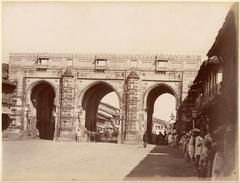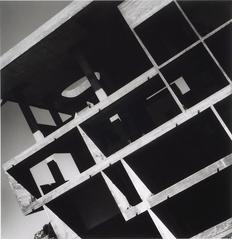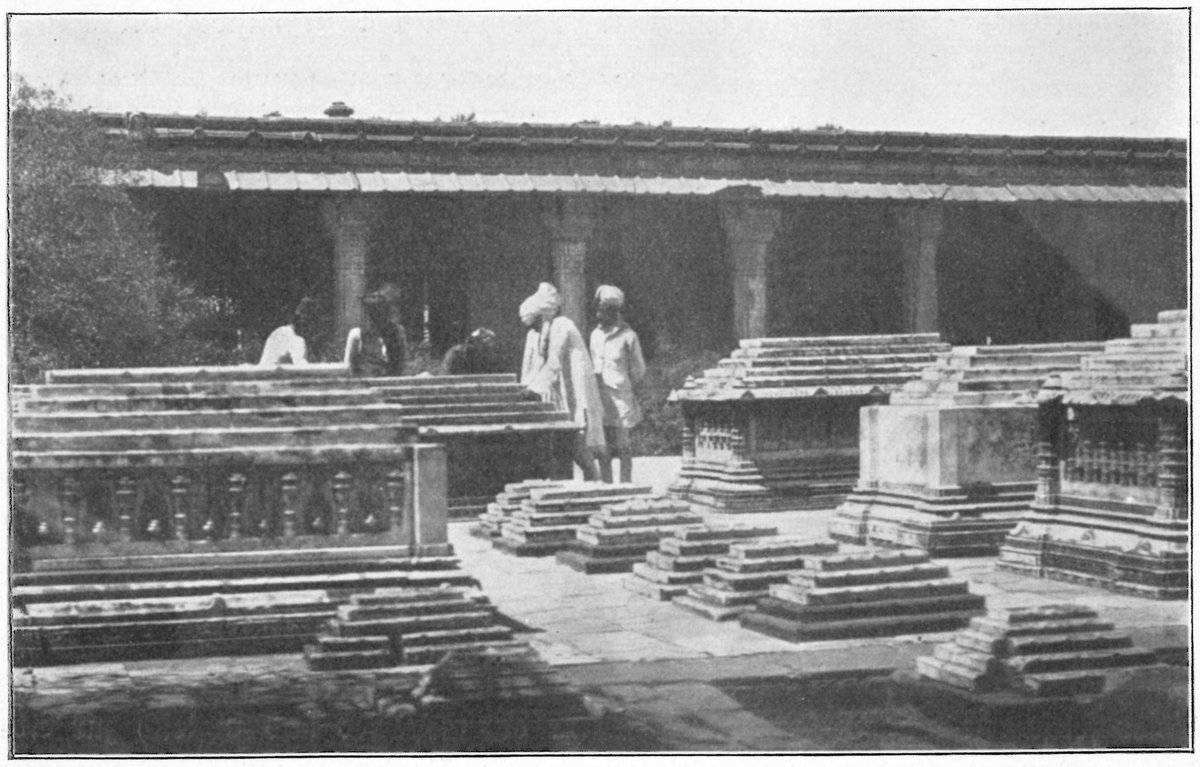
Comprehensive Guide to Visiting Mughli Bibi’s Tomb, Ahmedabad, India
Date: 18/07/2024
Introduction
Mughli Bibi’s Tomb, an exquisite example of Mughal architecture, is nestled in the heart of Ahmedabad, India. This historical monument, constructed in the late 16th century during the reign of Emperor Akbar, stands as a testament to the artistic and cultural achievements of the Mughal era. Known for its intricate design and architectural grandeur, the tomb reflects the synthesis of Persian and Indian styles, a hallmark of Mughal constructions. The significance of Mughli Bibi, a prominent figure in the Mughal court, adds a layer of historical and cultural depth to this site, making it a valuable destination for historians, architecture enthusiasts, and tourists alike. The monument not only offers a serene escape but also provides insights into the social dynamics and architectural innovations of the period (source).
Table of Contents
- [Origins and Construction](#origins-and-constructionorigins-and-construction)
- [Architectural Features](#architectural-featuresarchitectural-features)
- [Historical Significance](#historical-significancehistorical-significance)
- [Preservation and Restoration](#preservation-and-restorationpreservation-and-restoration)
- [Visitor Experience](#visitor-experiencevisitor-experience)
- [Guided Tours](#guided-toursguided-tours)
- [Nearby Attractions](#nearby-attractionsnearby-attractions)
- [Accessibility and Visitor Tips](#accessibility-and-visitor-tipsaccessibility-and-visitor-tips)
- [Visiting Hours](#visiting-hoursvisiting-hours)
- [Ticket Prices](#ticket-pricesticket-prices)
- [Travel Tips](#travel-tipstravel-tips)
- [FAQ](#faqfaq)
- [Conclusion](#conclusionconclusion)
- [References](#referencesreferences)
Origins and Construction
Mughli Bibi’s Tomb, located in Ahmedabad, India, dates back to the Mughal era. Constructed in the late 16th century during the reign of Emperor Akbar, it reflects the architectural grandeur of that period. The tomb is attributed to skilled artisans and architects of the Mughal era, who were renowned for creating intricate structures using sandstone and marble. The design features a blend of Persian and Indian architectural styles, a hallmark of Mughal constructions.
Architectural Features
Mughli Bibi’s Tomb is an excellent example of Mughal architecture, characterized by its symmetrical design, intricate carvings, and detailed ornamentation. The structure is built on a raised platform with a central dome flanked by smaller domes on each corner. The entrance is through a grand arched gateway decorated with floral and geometric patterns. The interior boasts intricate carvings and inlay work, with marble and semi-precious stones adding to its elegance.
Historical Significance
The tomb provides insights into the architectural and cultural practices of the Mughal era. It is a testament to the artistic and engineering prowess of Mughal artisans and serves as a valuable source of information for historians and researchers. Additionally, it reflects the social and cultural dynamics of the Mughal court, where women played an important role. Mughli Bibi’s influence and contributions to the court are symbolized by her tomb.
Preservation and Restoration
Over the centuries, Mughli Bibi’s Tomb has faced challenges of weathering and neglect. However, the Archaeological Survey of India (ASI) has undertaken several restoration projects to repair and maintain the structure. These efforts include cleaning and repairing the stonework, restoring intricate carvings, and ensuring structural stability. Modern techniques and materials are used to reinforce the structure, while traditional methods restore the intricate carvings and decorations (source).
Visitor Experience
Visitors can expect to be transported back in time as they explore the architectural marvels of the Mughal era. The tomb is located in a serene setting, providing a peaceful atmosphere for visitors. The well-maintained gardens surrounding the tomb offer a tranquil space to relax and appreciate the monument’s beauty.
Guided Tours
Guided tours are available for visitors who wish to learn more about the history and significance of the tomb. These tours provide detailed information about the architectural features, historical context, and cultural importance of the tomb.
Nearby Attractions
Visitors can explore nearby attractions in Ahmedabad, including other historical monuments, museums, and cultural sites such as Sabarmati Ashram, Sidi Saiyyed Mosque, and the Calico Museum of Textiles.
Accessibility and Visitor Tips
Mughli Bibi’s Tomb is easily accessible from various parts of Ahmedabad. The tomb is located in the heart of the city, making it convenient for visitors to reach by public transport or private vehicles. Parking facilities are available near the tomb for those traveling by car.
Visiting Hours
The tomb is open to visitors from 9:00 AM to 5:00 PM daily. It is advisable to visit early in the morning or late in the afternoon to avoid the peak heat of the day.
Ticket Prices
Entrance to Mughli Bibi’s Tomb is free, but donations for the preservation of the monument are welcome.
Travel Tips
Visitors are advised to wear comfortable clothing and footwear, as they may need to walk and explore the area around the tomb. It is recommended to carry water and sun protection, especially during the summer months when temperatures can be high. Photography is allowed, but visitors are requested to respect the monument and avoid causing any damage to the structure. Follow the guidelines and instructions provided by the authorities to ensure the preservation of the tomb.
FAQ
What are the visiting hours for Mughli Bibi’s Tomb?
The tomb is open from 9:00 AM to 5:00 PM daily.
How much are the tickets to visit Mughli Bibi’s Tomb?
Entrance is free, but donations are welcome.
Are guided tours available?
Yes, guided tours are available to provide detailed information about the tomb.
Conclusion
Mughli Bibi’s Tomb is a remarkable historical monument that offers a glimpse into the rich architectural and cultural heritage of the Mughal era. The tomb’s intricate design, historical significance, and serene setting make it a must-visit destination for history enthusiasts and tourists alike. By preserving and appreciating such monuments, we can continue to honor and learn from the legacies of the past. For more information and updates, visit the Archaeological Survey of India or follow them on social media.
